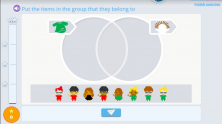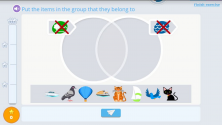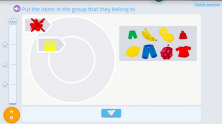Set theory is known as a math content area but its uses go far beyond the development of logical-mathematical thinking. Understanding set theory allows us to use the sets as a tool to analyze, classify, and organize the knowledge acquired to develop the complex conceptual network in which we store our learning.
So there are four ways in which we can define sets:
- Extension or enumeration: its elements are enclosed in brackets and separated by commas. Each set describes a list of all its elements.
- Understanding: its elements are determined by a condition that is established between brackets.
- Venn diagrams: closed regions that allow us to visualize the relationships between the sets.
- Verbal description: This is a statement that describes a feature common to all elements of the set.
Thus, this theory can work with any content you want to develop in primary school (or any other educational stage).
Example:
Express the four possible ways you can group “vertebrate animals set”.
Extension: A = {mammals, reptiles, birds, amphibians, fish}
Understanding: A = {x|x is a vertebrate}
By Venn diagram:
 By verbal description: Figure A contains all the animals that have an internal skeleton.
By verbal description: Figure A contains all the animals that have an internal skeleton.
The didactic kindness of set theory lies in the development of the capacity for analysis and synthesis since it allows one to represent and treat a set of real or abstract elements as a whole. A whole that allows us to define it as a specific item from the common characteristics between each of its members.
It is very important to comprehend the properties and operations. To do this in Smartick we propose classification exercises and children work with the properties of Venn diagrams:



If you have found this post interesting, you can learn more information below:
Sign up for a free 15-day trial today at Smartick!
Learn More:
- How to Group Sets and Create Venn Diagrams
- Working with Venn Diagrams in Smartick
- Venn Diagrams, Set Diagrams and Logic Diagrams
- Introduction to Sets and Subsets
- Manipulative Games to Practice Set Theory







